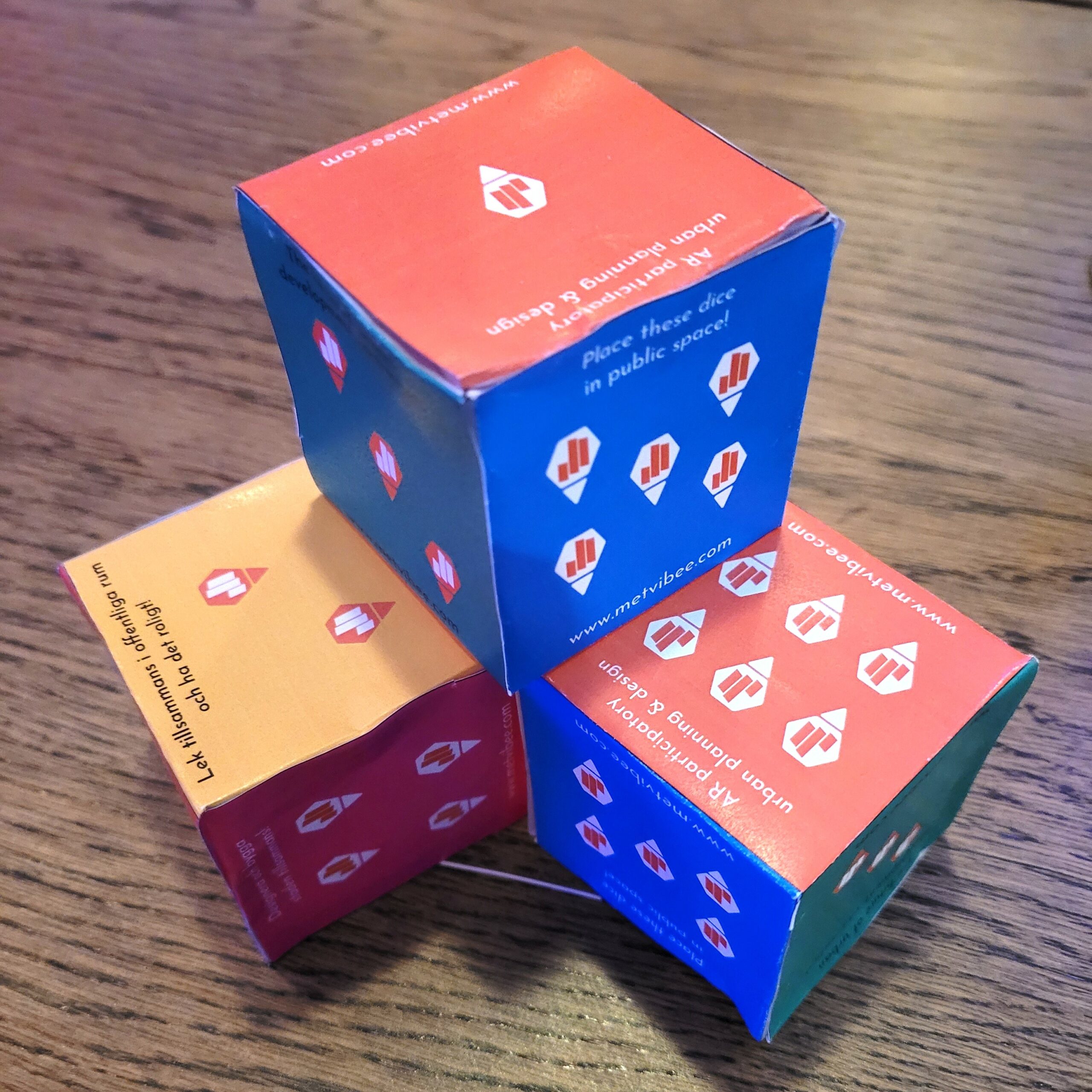While we’re progressing on the development of our participatory urban planning and design app, we’re planning more “mischief” in public space to highlight our passion with urban co-creation and playful urban development!
Print these out, fold them, and put them out in public space!
All you have to do:
- Download the PDF files here:
- in English: drawable cube; dice
- på svenska: ritbar kub; tärning
- Print the PDF
- Cut out the cube
- Fold along the lines and flaps
- Glue the flaps (in gray) on the inside of the cube
- Place the cubes in public space and let people play with it!
Of course, you can also choose to keep them as your table declaration or your game tools, if you choose to; but we believe it’s more fun when you share it forward: we’d love to see people being surprised in public spaces! 🙂

Don’t forget to (invite people to) draw on the cubes!
For the drawable cube, we specifically left several empty sides to invite people to draw on it! You can either draw on the cube yourself or invite other people to draw on it. Our original intention is for people to discover these cubes in public space and draw on them (and co-create the artwork through discovery and addition to the art), but of course if you have a better idea to co-create the fun, please feel free to do it (and let us know)!
Even for the dice, you can decorate it as you will (as long as it keeps functioning as a dice).

Playful objects like these are a powerful invitation to participate in co-creation
We’ve tested these playful objects at parties, with the drawable cubes one weekend and the dices another weekend. For both weekends, these cubes have elicited great curiosity among the partygoers; some people wrote on the cubes or proposed games to use the dices with.
It’s clear that playful objects like these are a powerful invitation for people to participate in co-creation. Play transcends personal boundaries, brings people out of comfort zones, and breaks the ice between strangers.
So is it the same for urban development. For a healthy planning and design process to take place, we need to have sufficient incentives to invite stakeholders to participate and collaborate. Ice breaking is often a necessary first step for stakeholders to listen to each other’s perspectives, and work with each other to build their community. Isn’t it obvious, then, that play is a great medium for enabling participatory processes towards better future cities?
Will you play together with us in creating urban mischief? 🙂


You must be logged in to post a comment.